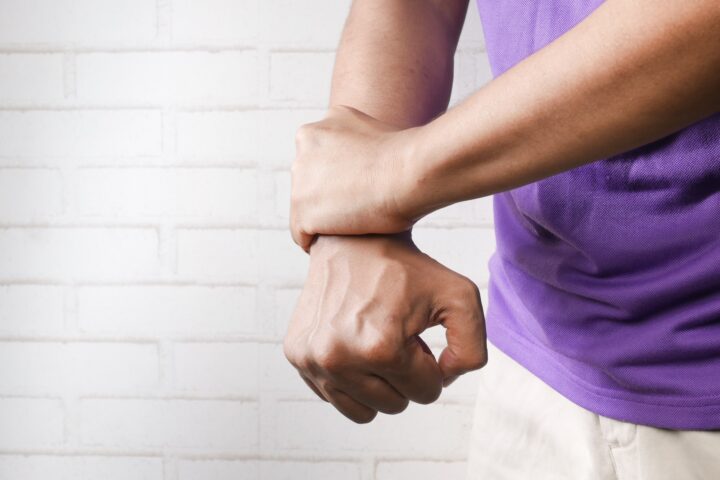6 Ways You Can Achieve Pain Relief
Pain is a difficult signal to navigate. It can be hard to know where it’s coming from or how best to manage it, especially when traditional treatment methods are either too expensive, not available, or just don’t provide the pain relief desired. Fortunately, many alternative strategies for managing and reducing pain go beyond conventional medicines.
With focus and consistency, some of these practices will offer lasting relief so you can move on with what matters most: living life free from unwanted discomfort and disquiet. Here we explore 6 ways you can use to find your path towards achieving real and sustainable problem resolution with various tools at your disposal such as massage therapy, exercise regimens, nutrition considerations, and more!

Identify the source of your pain and develop a plan for addressing it
Pain can be a frustrating experience. Whether it’s physical discomfort or emotional distress, identifying the source of your pain is the first step toward finding relief. It’s important to take the time to listen to your body and understand where the pain is coming from. Once you have an understanding of the cause, you can begin to develop a plan for addressing it.
This could include things like seeking medical advice in terms of therapy, implementing a self-care routine like yoga, or finding support from loved ones. Alternatively, exploring resources like RELATYV Mobile Pain Management in Wisconsin (or elsewhere), for instance, may provide innovative, non-invasive methods to address pain effectively. Remember, pain is a signal from your body that something isn’t quite right, and it’s up to you to take action toward healing and finding relief.
Try stretching exercises to help reduce tension and loosen muscles
Do you ever feel like your muscles are tight and tense? Maybe you spend a lot of time sitting at a desk or doing repetitive motions that leave your body feeling stiff. If that sounds like you, then it’s time to try some stretching exercises. Not only will stretching help to reduce tension and improve your range of motion, but it can also leave you feeling more relaxed and refreshed. Plus, with so many different types of stretches out there, you’re sure to find one that suits your needs.
Consider alternative therapies
Traditional medicine has its limitations in treating pain, which is why many people turn to alternative therapies such as acupuncture, massage, or natural cannabinoids. Acupuncture involves the insertion of tiny needles at specific points in the body to stimulate the nerves and release tension.
Massage involves the manipulation of soft tissues and muscles to alleviate pain and promote relaxation. In another hand, experts from http://www.naturaldos.com pointed out that there is new research pioneered by scientists and doctors that unlocks the power of natural cannabinoids. These natural cannabinoids have shown promising potential in managing pain and inflammation without the side effects associated with traditional medications. However, no matter which option you choose, all of these therapies are effective in reducing pain and improving overall well-being.
Use heating pads or ice packs to provide targeted relief for specific areas
When trying to face aches and pains, sometimes a general pain reliever just won’t do the trick. That’s where targeted relief comes in, and heating pads and ice packs are the perfect tools for the job. Whether you’ve pulled a muscle at the gym or have a sore spot that just won’t go away, these packs provide direct relief to the area that needs it most. Heat is great for soothing tight muscles and improving circulation, while cold constricts blood vessels to reduce inflammation.
Manage stress levels by taking time out for yourself, exercising regularly, and getting adequate rest
With our busy and demanding schedules, it’s crucial to carve out time for self-care and stress management. One effective way to manage stress levels is to take some much-needed time out for yourself. Whether it’s reading a book, taking a relaxing bath, or enjoying your favorite hobby, make sure to do something that brings you joy and helps you unwind and relieve pain.
Another essential aspect to consider is exercising regularly, as physical activity has been shown to improve overall well-being. Lastly, prioritize getting adequate rest each night, as sleep is essential for mental and physical health. By incorporating these simple yet effective strategies into your routine, you can effectively manage stress and levels and lead a happier, healthier life.
Watch your diet – eating healthy foods can lessen inflammation associated with chronic pain
Chronic pain can be debilitating, affecting daily life and making simple tasks feel impossible. While there are many treatments available, diet can also play a crucial role in reducing inflammation and easing pain. Studies have shown that certain foods, such as fatty fish and leafy greens, can help decrease inflammation in the body, leading to a reduction in chronic pain.
It is important to remember that the food we put into our bodies can have a significant impact on our overall health and well-being. By being mindful of what we eat and making conscious choices to incorporate healthy options, we can potentially alleviate chronic pain and improve our quality of life.
By taking action to identify the source of your pain and develop a plan that works for you, you can take control of what may be causing your discomfort. Making changes to your lifestyle including stretching exercises, alternative therapies, using heating packs or ice packs, managing stress levels, and watching your diet can all be influential steps in achieving relief from pain.
Remember to always check with your doctor before embarking on a new course of care. Commitment and consistency are key elements in successfully alleviating or managing any type of chronic pain. Don’t wait any longer – discover how these six strategies can help you accomplish long-term relief for yourself!


